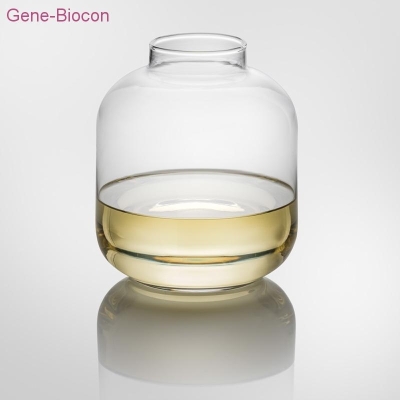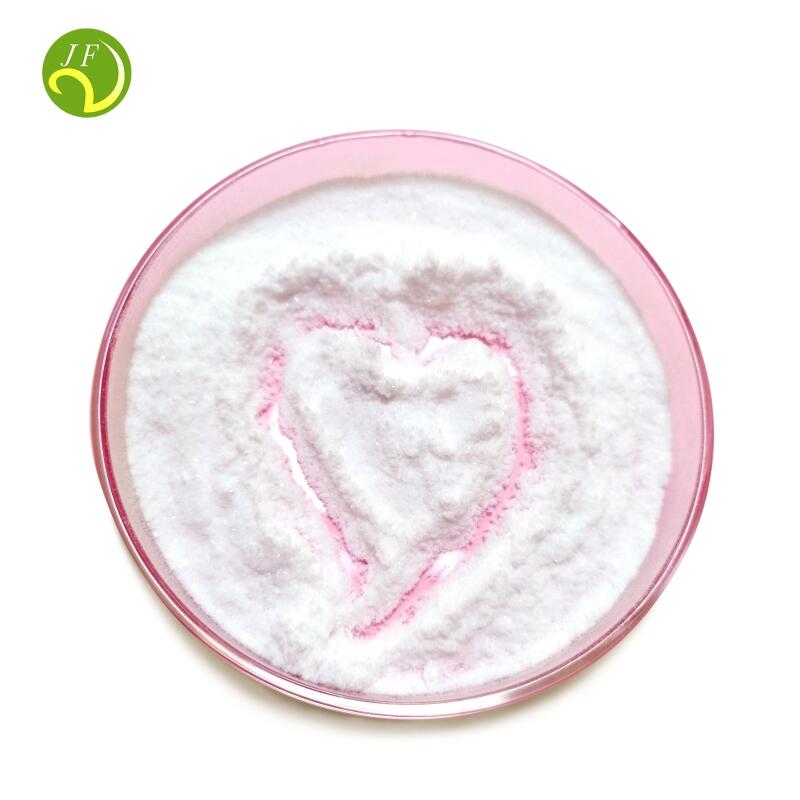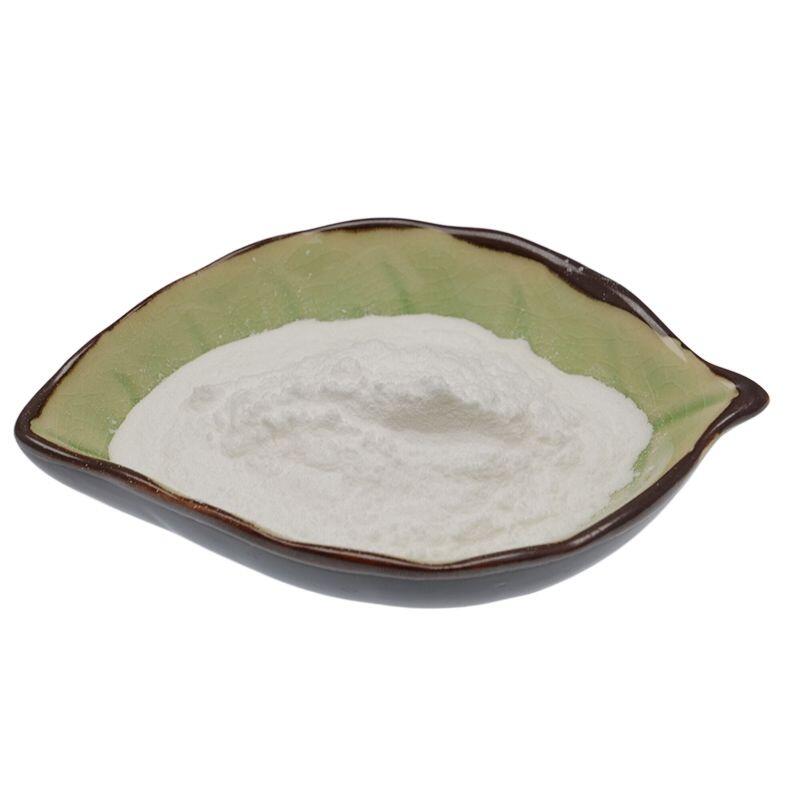-
Categories
-
Pharmaceutical Intermediates
-
Active Pharmaceutical Ingredients
-
Food Additives
- Industrial Coatings
- Agrochemicals
- Dyes and Pigments
- Surfactant
- Flavors and Fragrances
- Chemical Reagents
- Catalyst and Auxiliary
- Natural Products
- Inorganic Chemistry
-
Organic Chemistry
-
Biochemical Engineering
- Analytical Chemistry
-
Cosmetic Ingredient
- Water Treatment Chemical
-
Pharmaceutical Intermediates
Promotion
ECHEMI Mall
Wholesale
Weekly Price
Exhibition
News
-
Trade Service
Disesquiterpene (C25) is a special natural product of terpenoids containing five isoprene units.
Compared with other types of terpenes, it is relatively rare.
Only more than 1,300 are reported, most of which are found in marine organisms.
Disesquiterpenes are widely distributed in plants, but the total number of compounds found is not many, only more than 150 are reported.
Due to the novel and complex structure of plant dipsesquiterpenes and the diverse biological activities, they have attracted widespread international attention and research.
Compared with other types of terpenes, it is relatively rare.
Only more than 1,300 are reported, most of which are found in marine organisms.
Disesquiterpenes are widely distributed in plants, but the total number of compounds found is not many, only more than 150 are reported.
Due to the novel and complex structure of plant dipsesquiterpenes and the diverse biological activities, they have attracted widespread international attention and research.
The research team of Li Shenghong, a researcher at the Kunming Institute of Botany, Chinese Academy of Sciences, is dedicated to the research on the chemical diversity, biological functions and biosynthesis of plant dipsesquiterpenes.
In the early stage, two families (named as Leucosceptrum canum Smith, Colquhounia coccinea var.
mollis) glandular hairs and leaves of two kinds of Himalayan endemic medicinal plants of the Labiatae (Leucosceptrum canum Smith) and Colquhounia coccinea var.
The disesquiterpene of a series of novel skeletons of torchanthane has important defensive functions and significant immunosuppressive activity.
The key enzyme GFDPS in the biosynthetic pathway of disesquiterpene has been identified from the glandular hairs of the rice ball flower, revealing its Birth path and origin evolution.
In the early stage, two families (named as Leucosceptrum canum Smith, Colquhounia coccinea var.
mollis) glandular hairs and leaves of two kinds of Himalayan endemic medicinal plants of the Labiatae (Leucosceptrum canum Smith) and Colquhounia coccinea var.
The disesquiterpene of a series of novel skeletons of torchanthane has important defensive functions and significant immunosuppressive activity.
The key enzyme GFDPS in the biosynthetic pathway of disesquiterpene has been identified from the glandular hairs of the rice ball flower, revealing its Birth path and origin evolution.
Recently, the research team discovered a pair of novel 5/6/5/10/5 ring system containing macrocyclic ether structure Eurysoloids A from Eurysolen gracilis Prain, a medicinal plant in the Lamiaceae family.
(1) and B (2), their structure and absolute configuration were identified by single crystal X-ray diffraction and DP4+ calculation (Figure 1).
Activity tests found that compounds 1 and 2 have a significant inhibitory effect on CD3/CD28 monoclonal antibody-induced mouse T cells to secrete the inflammatory factor IFN-γ, but have no significant effect on the proliferation of T cells.
At the same time, the study found that compound 2 has a significant inhibitory effect on the adipogenesis of 3T3L1 cells, and has a significant inhibitory activity on the production of triglycerides, while no significant toxicity was observed at a high concentration of 200 μM (Organic Letters, 2021, 23, 2232).
-2237).
(1) and B (2), their structure and absolute configuration were identified by single crystal X-ray diffraction and DP4+ calculation (Figure 1).
Activity tests found that compounds 1 and 2 have a significant inhibitory effect on CD3/CD28 monoclonal antibody-induced mouse T cells to secrete the inflammatory factor IFN-γ, but have no significant effect on the proliferation of T cells.
At the same time, the study found that compound 2 has a significant inhibitory effect on the adipogenesis of 3T3L1 cells, and has a significant inhibitory activity on the production of triglycerides, while no significant toxicity was observed at a high concentration of 200 μM (Organic Letters, 2021, 23, 2232).
-2237).
A pair of C-14 epimers and the side chain containing furan ring structure of torcholane disesquiterpene colquhounoid D (1) and 14-epi-colquhounoid were discovered from Torch, a medicinal plant of Lamiaceae produced in Fengqing, Yunnan.
D(2), as well as five novel four-down (C21) and five-down (C20) two sesquiterpene compounds norcolquhounoids AE (3-7) (Figure 2), the structure and absolute configuration of the NMR spectrum and single Crystal X-diffraction confirmed.
The research achieved the conversion of the sesquiterpene (C25) compound colquhounoid D through a one-step chemical method to obtain the tetra-nor sesquiterpene (C21) compound 3.
In addition, studies have shown that dipesquiterpenes colquhounoid D and 14-epi-colquhounoid D have significant inhibitory activity against CD3/CD28 monoclonal antibody-induced mouse T cells to secrete IFN-γ, while the dipterpenes only show moderate activity (The Journal of Organic Chemistry, doi: org/10.
1021/acs.
joc.
1c00374).
D(2), as well as five novel four-down (C21) and five-down (C20) two sesquiterpene compounds norcolquhounoids AE (3-7) (Figure 2), the structure and absolute configuration of the NMR spectrum and single Crystal X-diffraction confirmed.
The research achieved the conversion of the sesquiterpene (C25) compound colquhounoid D through a one-step chemical method to obtain the tetra-nor sesquiterpene (C21) compound 3.
In addition, studies have shown that dipesquiterpenes colquhounoid D and 14-epi-colquhounoid D have significant inhibitory activity against CD3/CD28 monoclonal antibody-induced mouse T cells to secrete IFN-γ, while the dipterpenes only show moderate activity (The Journal of Organic Chemistry, doi: org/10.
1021/acs.
joc.
1c00374).
From the traditional Uyghur medicine Gentianella turkestanorum (Gand.
) Holub, a series of novel pseudogententane-type disesquiterpenes have also been discovered, including two new skeletons with 10,11-broken pseudogentanean Disesquiterpenes, whose structure and absolute configuration are confirmed by single crystal X-ray diffraction, most of these compounds show good immunosuppressive activity, and it is speculated that they should be an important part of the medicinal plant's medicinal material basis (Figure 3 The Journal of Organic Chemistry, 2020, 85, 5511-5515; Phytochemistry, doi: org/10.
1016/j.
phytochem.
2021.
112780).
(bioon.
com" target="_blank">Bioon.
com)
) Holub, a series of novel pseudogententane-type disesquiterpenes have also been discovered, including two new skeletons with 10,11-broken pseudogentanean Disesquiterpenes, whose structure and absolute configuration are confirmed by single crystal X-ray diffraction, most of these compounds show good immunosuppressive activity, and it is speculated that they should be an important part of the medicinal plant's medicinal material basis (Figure 3 The Journal of Organic Chemistry, 2020, 85, 5511-5515; Phytochemistry, doi: org/10.
1016/j.
phytochem.
2021.
112780).
(bioon.
com" target="_blank">Bioon.
com)
Disesquiterpene (C25) is a special natural product of terpenoids containing five isoprene units.
Compared with other types of terpenes, it is relatively rare.
Only more than 1,300 are reported, most of which are found in marine organisms.
Disesquiterpenes are widely distributed in plants, but the total number of compounds found is not many, only more than 150 are reported.
Due to the novel and complex structure of plant dipsesquiterpenes and the diverse biological activities, they have attracted widespread international attention and research.
Compared with other types of terpenes, it is relatively rare.
Only more than 1,300 are reported, most of which are found in marine organisms.
Disesquiterpenes are widely distributed in plants, but the total number of compounds found is not many, only more than 150 are reported.
Due to the novel and complex structure of plant dipsesquiterpenes and the diverse biological activities, they have attracted widespread international attention and research.
The research team of Li Shenghong, a researcher at the Kunming Institute of Botany, Chinese Academy of Sciences, is dedicated to the research on the chemical diversity, biological functions and biosynthesis of plant dipsesquiterpenes.
In the early stage, two families (named as Leucosceptrum canum Smith, Colquhounia coccinea var.
mollis) glandular hairs and leaves of two kinds of Himalayan endemic medicinal plants of the Labiatae (Leucosceptrum canum Smith) and Colquhounia coccinea var.
The disesquiterpene of a series of novel skeletons of torchanthane has important defensive functions and significant immunosuppressive activity.
The key enzyme GFDPS in the biosynthetic pathway of disesquiterpene has been identified from the glandular hairs of the rice ball flower, revealing its Birth path and origin evolution.
In the early stage, two families (named as Leucosceptrum canum Smith, Colquhounia coccinea var.
mollis) glandular hairs and leaves of two kinds of Himalayan endemic medicinal plants of the Labiatae (Leucosceptrum canum Smith) and Colquhounia coccinea var.
The disesquiterpene of a series of novel skeletons of torchanthane has important defensive functions and significant immunosuppressive activity.
The key enzyme GFDPS in the biosynthetic pathway of disesquiterpene has been identified from the glandular hairs of the rice ball flower, revealing its Birth path and origin evolution.
Recently, the research team discovered a pair of novel 5/6/5/10/5 ring system containing macrocyclic ether structure Eurysoloids A from Eurysolen gracilis Prain, a medicinal plant in the Lamiaceae family.
(1) and B (2), their structure and absolute configuration were identified by single crystal X-ray diffraction and DP4+ calculation (Figure 1).
Activity tests found that compounds 1 and 2 have a significant inhibitory effect on CD3/CD28 monoclonal antibody-induced mouse T cells to secrete the inflammatory factor IFN-γ, but have no significant effect on the proliferation of T cells.
At the same time, the study found that compound 2 has a significant inhibitory effect on the adipogenesis of 3T3L1 cells, and has a significant inhibitory activity on the production of triglycerides, while no significant toxicity was observed at a high concentration of 200 μM (Organic Letters, 2021, 23, 2232).
-2237).
(1) and B (2), their structure and absolute configuration were identified by single crystal X-ray diffraction and DP4+ calculation (Figure 1).
Activity tests found that compounds 1 and 2 have a significant inhibitory effect on CD3/CD28 monoclonal antibody-induced mouse T cells to secrete the inflammatory factor IFN-γ, but have no significant effect on the proliferation of T cells.
At the same time, the study found that compound 2 has a significant inhibitory effect on the adipogenesis of 3T3L1 cells, and has a significant inhibitory activity on the production of triglycerides, while no significant toxicity was observed at a high concentration of 200 μM (Organic Letters, 2021, 23, 2232).
-2237).
A pair of C-14 epimers and the side chain containing furan ring structure of torcholane disesquiterpene colquhounoid D (1) and 14-epi-colquhounoid were discovered from Torch, a medicinal plant of Lamiaceae produced in Fengqing, Yunnan.
D(2), as well as five novel four-down (C21) and five-down (C20) two sesquiterpene compounds norcolquhounoids AE (3-7) (Figure 2), the structure and absolute configuration of the NMR spectrum and single Crystal X-diffraction confirmed.
The research achieved the conversion of the sesquiterpene (C25) compound colquhounoid D through a one-step chemical method to obtain the tetra-nor sesquiterpene (C21) compound 3.
In addition, studies have shown that dipesquiterpenes colquhounoid D and 14-epi-colquhounoid D have significant inhibitory activity against CD3/CD28 monoclonal antibody-induced mouse T cells to secrete IFN-γ, while the dipterpenes only show moderate activity (The Journal of Organic Chemistry, doi: org/10.
1021/acs.
joc.
1c00374).
D(2), as well as five novel four-down (C21) and five-down (C20) two sesquiterpene compounds norcolquhounoids AE (3-7) (Figure 2), the structure and absolute configuration of the NMR spectrum and single Crystal X-diffraction confirmed.
The research achieved the conversion of the sesquiterpene (C25) compound colquhounoid D through a one-step chemical method to obtain the tetra-nor sesquiterpene (C21) compound 3.
In addition, studies have shown that dipesquiterpenes colquhounoid D and 14-epi-colquhounoid D have significant inhibitory activity against CD3/CD28 monoclonal antibody-induced mouse T cells to secrete IFN-γ, while the dipterpenes only show moderate activity (The Journal of Organic Chemistry, doi: org/10.
1021/acs.
joc.
1c00374).
From the traditional Uyghur medicine Gentianella turkestanorum (Gand.
) Holub, a series of novel pseudogententane-type disesquiterpenes have also been discovered, including two new skeletons with 10,11-broken pseudogentanean Disesquiterpenes, whose structure and absolute configuration are confirmed by single crystal X-ray diffraction, most of these compounds show good immunosuppressive activity, and it is speculated that they should be an important part of the medicinal plant's medicinal material basis (Figure 3 The Journal of Organic Chemistry, 2020, 85, 5511-5515; Phytochemistry, doi: org/10.
1016/j.
phytochem.
2021.
112780).
(bioon.
com" target="_blank">Bioon.
com)
bioon. ) Holub, a series of novel pseudogententane-type disesquiterpenes have also been discovered, including two new skeletons with 10,11-broken pseudogentanean Disesquiterpenes, whose structure and absolute configuration are confirmed by single crystal X-ray diffraction, most of these compounds show good immunosuppressive activity, and it is speculated that they should be an important part of the medicinal plant's medicinal material basis (Figure 3 The Journal of Organic Chemistry, 2020, 85, 5511-5515; Phytochemistry, doi: org/10.
1016/j.
phytochem.
2021.
112780).
(bioon.
com" target="_blank">Bioon.
com)
com" target="_blank">







